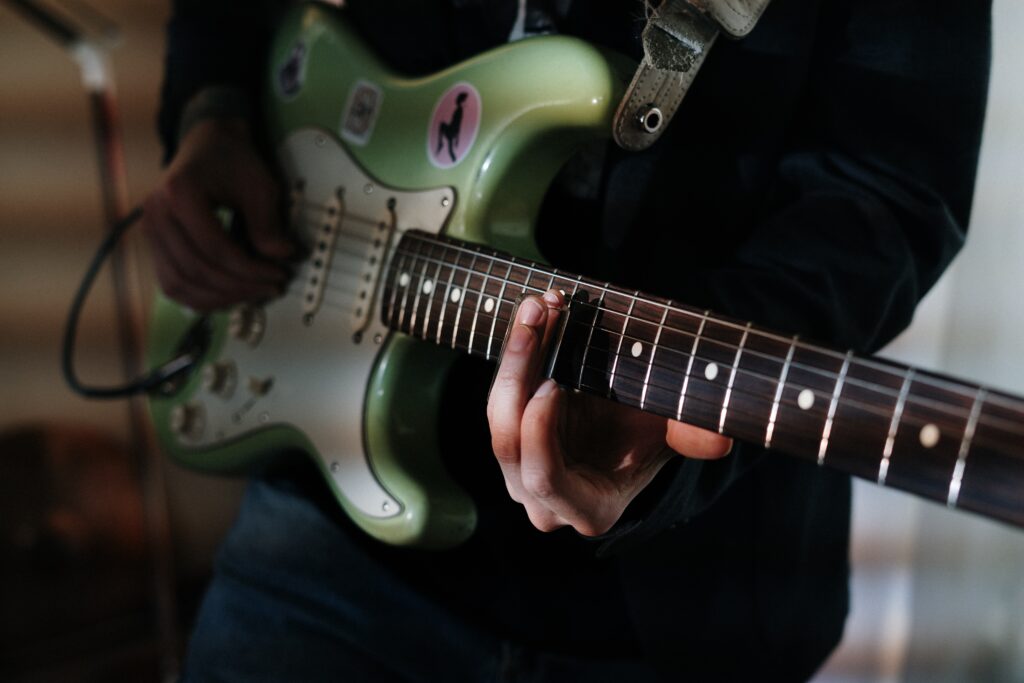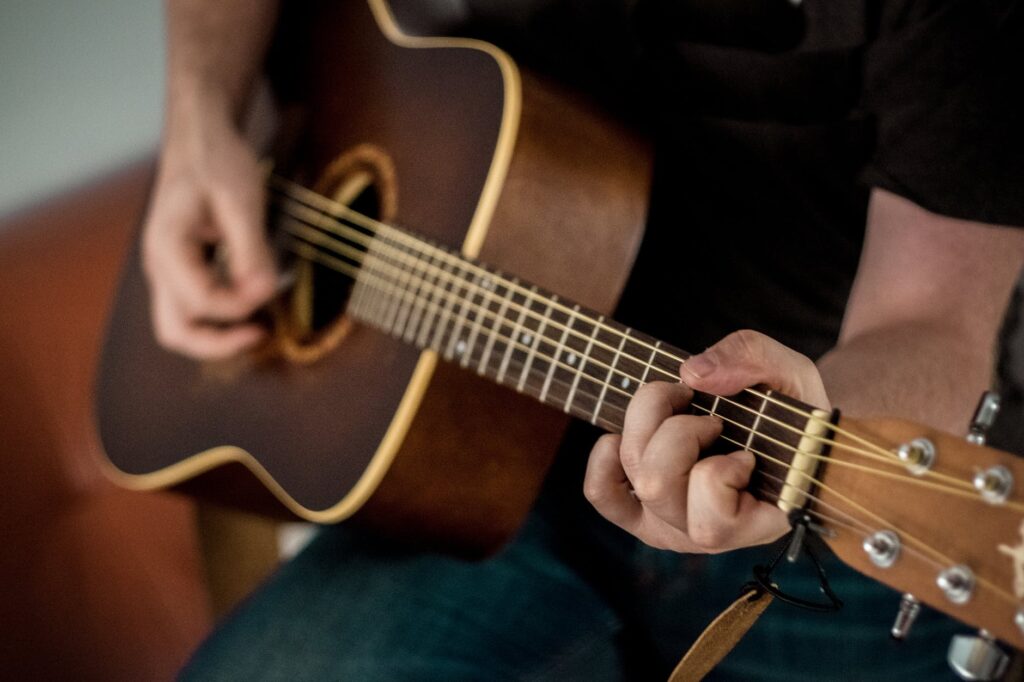
If you’re a budding guitarist or a seasoned player looking to expand your chord repertoire, mastering the G/B chord, also known as the G over B chord, is a valuable skill to acquire. This versatile chord adds depth and richness to your music, making it a favorite among musicians in various genres. In this comprehensive guide, we’ll take you through the ins and outs of playing the G/B chord, providing step-by-step instructions, strumming techniques, practice tips, troubleshooting advice, and much more.
Understanding the G/B Chord
Before we dive into the practical aspects of playing the G/B chord, let’s first understand what this chord is all about. The G/B chord consists of two notes: G and B. In musical notation, it’s written as G/B, which means you play a G major chord with a B note as the bass note. This creates a unique and harmonious sound that can add depth to your chord progressions.
To construct the G/B chord, you’ll need to place your fingers strategically on the guitar fretboard. Typically, you’ll use your index finger to fret the second fret of the A string (which is the B note), while the other fingers form the G major chord shape. This combination produces the signature G/B sound.
Finger Placement

Let’s break down the finger placement for the G/B chord:
- Index Finger: Press down on the second fret of the A string (B note).
- Middle Finger: Position your middle finger on the third fret of the low E string (G note).
- Ring Finger: Place your ring finger on the third fret of the B string (D note).
- Pinky Finger: Lastly, use your pinky finger to fret the third fret of the high E string (G note).
Remember to arch your fingers properly and press down firmly on the strings to ensure a clean sound. It might take some practice to get your fingers in the right positions, but with time, it will become second nature.
Strumming Techniques
Achieving a clean and crisp sound while playing the G/B chord depends on your strumming technique. Here are a few techniques to try:
- Downward Strum: Start with a simple downward strum using your thumb or a pick. Ensure you hit all the strings, starting from the A string (the B note).
- Fingerpicking: Experiment with fingerpicking patterns to create a melodic and intricate sound. Pluck the strings individually to emphasize the G and B notes.
- Arpeggios: Practice arpeggios by picking the G, B, and high E strings consecutively. This adds a beautiful arpeggiated effect to your chords.
- Palm Muting: For a muted and percussive sound, try palm muting while strumming the G/B chord.
Common G/B Chord Progressions
The G/B chord is incredibly versatile and can be used in various progressions across different music genres. Some common progressions that feature the G/B chord include:
- G/B – C – D: A classic progression found in many pop and rock songs.
- G/B – Am – C – G: Ideal for creating a melancholic and introspective mood.
- G/B – Em – C – D: A versatile progression used in folk and country music.
Practice Tips
Like any chord, mastering the G/B chord requires practice. Here are some tips to help you improve your G/B chord transitions:
- Isolate the Chord: Practice transitioning between G/B and other chords to build muscle memory.
- Use a Metronome: Practice with a metronome to work on your timing and rhythm.
- Slow and Steady: Start at a slow tempo and gradually increase your speed as you become more comfortable.
- Play Along with Songs: Play songs that feature the G/B chord to apply what you’ve learned in a musical context.
Troubleshooting
It’s common to encounter challenges when learning new chords. Here are some common issues beginners face with the G/B chord and how to overcome them:
- Muted Strings: Ensure your fingers are pressing down firmly and not muting adjacent strings.
- Buzzing Sound: Check your finger placement and make sure you’re not inadvertently touching other strings.
- Difficulty Transitioning: Practice transitioning between G/B and other chords slowly and deliberately.
G/B Chord Variations
While the standard G/B chord is a fundamental part of any guitarist’s repertoire, there are variations you can explore to add complexity to your music. Some include:
- G/B/D: This variation includes the D note, creating a richer sound.
- G/B/F#: Introducing the F# note adds a unique twist to the chord.
- G/B/A: Adding the A note creates a suspended feel.
Experiment with these variations to discover new sounds and textures for your music.
Famous Songs Featuring G/B Chords
The G/B chord has been used by countless artists to add emotion and depth to their songs. Some famous examples include:
- “Hotel California” by Eagles: The iconic intro features a G/B chord that sets the mood for the entire song.
- “Blackbird” by The Beatles: This classic acoustic song relies on the G/B chord to create its signature sound.
- “Wish You Were Here” by Pink Floyd: The G/B chord is used to evoke a sense of longing and nostalgia.
Tips for Playing G/B Chord Smoothly
For those looking to take their G/B chord mastery to the next level, consider these advanced tips:
- Practice Chord Transitions: Focus on transitioning smoothly between the G/B chord and other chords in your repertoire.
- Strengthen Hand Muscles: Develop hand strength and dexterity through finger exercises.
- Build Muscle Memory: Repetition is key to mastering this chord. Incorporate it into your daily practice routine.
How to play G/B Chord in Different Keys
Understanding how to play the G/B chord in various keys is essential for versatile playing. Each key brings its own unique flavor to the chord. Here are a few examples:
- G/B in the Key of C: Simply move your finger up one fret on the A string to play G/B in the key of C.
- G/B in the Key of D: Shift the chord shape up to the 5th fret to play G/B in the key of D.
- G/B in the Key of E: Move the chord shape up to the 7th fret for the key of E.
G/B Chord in Acoustic and Electric Guitar
Playing the G/B chord on acoustic and electric guitars can yield different tonal qualities. On acoustic guitars, the chord tends to have a warmer and more resonant sound, while on electric guitars, it can be brighter and more cutting. Experiment with both to see which suits your musical style.
Creativity with G/B Chord
Don’t limit yourself to conventional use. The G/B chord is a canvas for your creativity. Experiment with different strumming patterns, fingerpicking styles, and chord progressions to create your unique sound.
Online Resources and Tutorials
To further enhance your G/B chord skills, there are plenty of online resources and tutorials available. Here are a few recommended sources:
- YouTube Guitar Lessons: Search for G/B chord tutorials and demonstrations.
- Ultimate Guitar: Access chord charts and tabs for songs featuring the G/B chord.
Conclusion
Mastering the G/B chord opens up a world of musical possibilities. Whether you’re a beginner or an experienced guitarist, this versatile chord can add depth and emotion to your playing. Practice diligently, explore its variations, and use it creatively in your music. With time and dedication, you’ll become proficient in playing the G/B chord and elevate your guitar skills.
Still Need Help?
FAQs (Frequently Asked Questions)
1. Can I use a capo when playing the G/B chord in different keys?
- Yes, using a capo allows you to change the key while still using the same G/B chord shape. Experiment with capo placement for different sounds.
2. Are there any songs that exclusively use the G/B chord throughout?
- While it’s less common, some songs do use the G/B chord predominantly. “Blackbird” by The Beatles is a notable example.
3. What is the difference between G/B and Gmaj7/B?
- The G/B chord includes the B note as the bass note and the G major triad, while Gmaj7/B includes the B note as the bass note and the G major seventh chord.
4. How do I strum the G/B chord to make it sound more melodic?
- Experiment with fingerpicking and arpeggio patterns to emphasize individual notes within the chord for a melodic effect.
5. Can I substitute the G/B chord for a regular G major chord?
- While you can substitute the G/B chord in some cases, it may change the overall sound and mood of the song. It’s essential to choose chords that fit the desired musical context.

